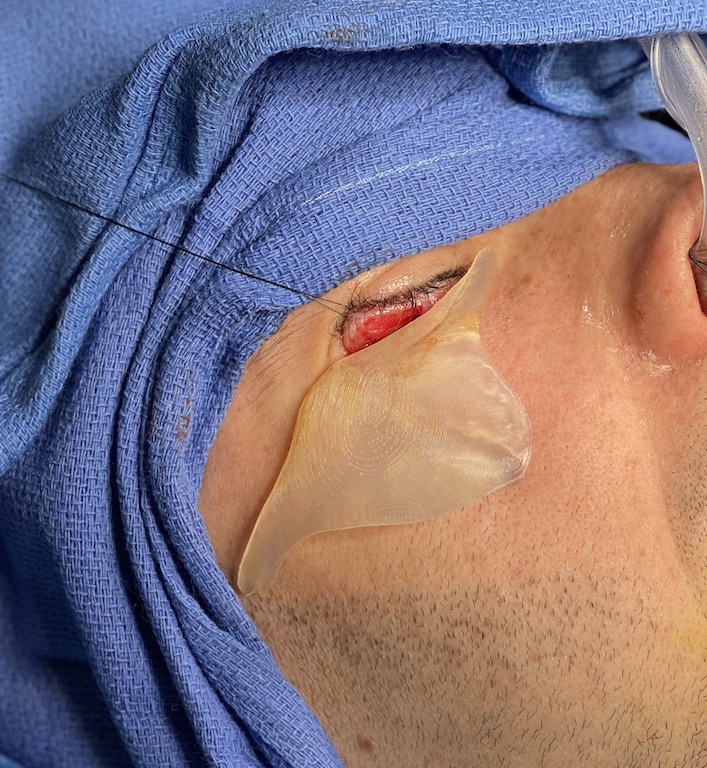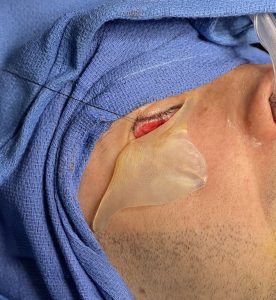Custom infraorbital-malar (IOM) implants have expanded the augmentation options for the midface. Creating an implant footprint from under the eye and out onto the zygomatic arch provides a horizontal line of augmentation that uniquely treats undereye and cheekbone deficiencies. It is also responsible for creating the popular high cheekbone look.
When placing custom IOM implants there are two different approaches, through the mouth (intraoral) and through the lower eyelid. Each approach has their advantages and disadvantages. My preference is almost always a transcutaneous lower eyelid incision as it provides the most assured placement of the implant, particularly if the design saddles the infraorbital rim area. (which most IOM implants do) Trying to negotiate around the infraorbital nerve makes placement difficult and will cause some prolonged infraorbital nerve dysesthesia.


While most custom infraorbital-malar implants can be placed exclusively through a lower eyelid incision without much difficulty, in the uncommon design which has a large malar component this does not work as well. More assured pocket dissection and implant insertion/placement can be done by coming from both above and below taking advantage of the benefits that each incisional access provides.
Dr. Barry Eppley
Indianapolis, Indiana




